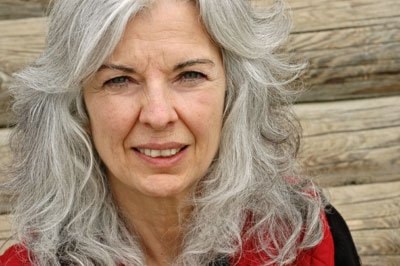Yukon children are performing below the national average in reading, according to a recent national study.
Yukon teacher Beverly Avano hopes to change that using the successful Wilson Reading program.
Avano learned about the program in 1998 when a Wilson trainer was first brought to the territory.
Her name was Connie Bartlet and 10 years later she’s back in the Yukon to continue training 13 teachers in the reading program.
Avano is studying to become a trainer herself, and expects to complete the process in September.
“It has been so successful with so many children,” said Avano, who works as a learning assistant at Christ the King Elementary with children that have special issues with reading.
“It’s just excellent, excellent teaching skills — it combines everything we know about what a really excellent reading program needs in order to be successful.”
Wilson is not rocket science.
The program is organized in a systematic, cumulative way that makes it easy for both teachers and students to use and understand.
“I’m seeing amazing successes with it,” said Avano.
“And not only is it just teaching children how to read, it’s giving them the self-esteem and the confidence that they’ve been lacking.”
For a young student, sitting in a classroom where everybody around them is reading and they’re not, reading troubles can have a demoralizing effect.
These students go into that environment every day and it really wears children down.
As part of her training, Avano observes many of these children as they learn the program.
“I was observing a student who, for the first three observations just had his head down — he was participating but not really into it,” she said.
“But by the fourth observation he was just so open, he was sitting up, he was making eye contact.
“You could just see that the program has given him the confidence he didn’t have before.”
The program also has frequent diagnostic checks to pick up on the areas where students are having difficulties, said Avano.
That allows teachers to reteach these skills.
And the Wilson reading program takes a multi-sensory approach, said Avano.
“We often teach through visual and auditory, but this uses tactile as well.”
Children are taught to tap sounds out on their fingers.
As they begin to grasp these sounds they tap faster, eventually sliding their finger and blending the sound into a word.
Connie Bartlett, who is training the Yukon’s teachers, has used the Wilson program to teach many native communities throughout the United States.
However, the program is not only being brought to the territory to help First Nation youth, said Avano.
“It’s helpful for any children that are having trouble with reading.”
At the end of the summer, Avano will become the territory’s first certified Wilson Reading trainer.
Up until now, the territory has been bringing trainers like Bartlett in from Outside.
Avano will now be offering training to any Yukon teachers that are interesting in learning the program.
Barbara Wilson originally developed the program for adults that were dyslexic.
It was so successful that school systems began asking her to train their teachers to use the program.
Wilson will be a guest speaker in Whitehorse in September 2009 during an international reading conference.
